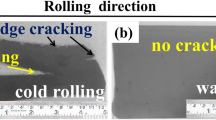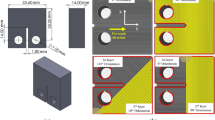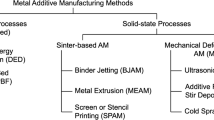Abstract
Carbon fiber-reinforced polymer (CFRP) composite joint structures based on interference fit exhibit superior mechanical properties compared to equivalent joint geometries utilizing clearance fits. The present research investigates the mechanical properties and failure mechanism of CFRP interference-fit joints subject to long-term exposure to low temperatures. A series of studies were designed to examine with interference-fit sizes ranging from 0 to 2.11%, subjected to temperatures between − 60 and 20 °C, and aging periods from 0 to 18 months. Tensile tests were conducted on these samples. Using a microscale analysis, three-dimensional representative volume elements (3D-RVEs) models were constructed to analyze the internal state, distribution of thermal residual stress, and damage initiation mechanism of CFRP subjected to low-temperature exposure. The results show that the strength and stiffness of the CFRP joints initially increase, reach a peak, and subsequently decrease with an increase in either the interference-fit size or aging time. The strength and stiffness of the considered geometries exhibit an approximately linear increase with decreasing temperature. Inside the CFRP, exposure to low temperatures causes the formation of thermal residual stress, which is particularly high in areas with closely spaced fibers. Short-term low temperature enhances the bonding force between the fiber and matrix, thereby improving the mechanical properties of the CFRP interference-fit joint structures. Following prolonged exposure to low temperatures, the debonding cracks formation increase in regions with concentrated residual stress, thereby decreasing the strength and stiffness of the structure.














Similar content being viewed by others
References
Zhang J, Rao J, Ma L, Wen X (2022) Investigation of the damping capacity of CFRP raft frames. Materials 15(2):653
Altin M, Motorcu AR, Gökkaya H (2020) Optimization of machining parameters for kerf angle and roundness error in abrasive water jet drilling of CFRP composites with different fiber orientation angles. J Braz Soc Mech Sci 42:173
Sethi S, Ray BC (2015) Environmental effects on fibre reinforced polymeric composites: evolving reasons and remarks on interfacial strength and stability. Adv Colloid Interface Sci 217:43–67
Mára V, Michalcová L, Kadlec M, Krčil J, Špatenka P (2021) The effect of long-time moisture exposure and low temperatures on mechanical behavior of open-hole Cfrp laminate. Polym Composite 42(7):3603–3618
Liu Y, Wang M, Tian W, Qi B, Lei Z, Wang W (2019) Ohmic heating curing of carbon fiber/carbon nanofiber synergistically strengthening cement-based composites as repair/reinforcement materials used in ultra-low temperature environment. Compos Part A Appl Sci Manuf 125:105570
Hu Y, Cheng F, Ji Y, Yuan B, Hu X (2020) Effect of aramid pulp on low temperature flexural properties of carbon fibre reinforced plastics. Compos Sci Technol 192:108095
Ge J, Cheng G, Su Y, Zou Y, Ren C, Qin X, Wang G (2022) Effect of cooling strategies on performance and mechanism of helical milling of CFRP/Ti–6Al–4V stacks. Chin J Aeronaut 35(2):388–403
Zaoutsos S, Zilidou M (2017) Influence of extreme low temperature conditions on the dynamic mechanical properties of carbon fiber reinforced polymers. IOP Conf Ser Mater Sci Eng 276:012024
Wilson PR, Cinar AF, Mostafavi M, Meredith J (2018) Temperature driven failure of carbon epoxy composites—a quantitative full-field study. Compos Sci Technol 155:33–40
Dutta P, Hui D (1996) Low-temperature and freeze-thaw durability of thick composites. Compos Part B Eng 27(3–4):371–379
Takeda T, Shindo Y, Narita F (2012) Three-dimensional stress analysis of cracked satin woven carbon fiber reinforced/polymer composites under tension at cryogenic temperature. Jpn Soc Mech Eng 47:84–85
Wei Z, Takeda T, Narita F, Shindo Y (2014) Flexural fatigue performance and electrical resistance response of carbon nanotube-based polymer composites at cryogenic temperatures. Cryogenics 59:44–48
Liu PF, Liao BB, Jia LY, Peng XQ (2016) Finite element analysis of dynamic progressive failure of carbon fiber composite laminates under low velocity impact. Compos Struct 149:408–422
Zhao Y, Chen Y, Ai S, Fang D (2019) A diffusion, oxidation reaction and large viscoelastic deformation coupled model with applications to SiC fiber oxidation. Int J Plast 118:173–189
Yan M, Jiao W, Yang F, Ding G, Zou H, Xu Z, Wang R (2019) Simulation and measurement of cryogenic-interfacial-properties of T700/modified epoxy for composite cryotanks. Mater Des 182:108050
Ren M, Zhang X, Huang C, Wang B, Li T (2019) An integrated macro/micro-scale approach for in situ evaluation of matrix cracking in the polymer matrix of cryogenic composite tanks. Compos Struct 216:201–212
Meng J, Wang Y, Yang H, Wang P, Lei Q, Shi H, Lei H, Fang D (2020) Mechanical properties and internal microdefects evolution of carbon fiber reinforced polymer composites: cryogenic temperature and thermocycling effects. Compos Sci Technol 191:108083
Wu Q, Ogasawara T, Yoshikawa N, Zhai H (2018) Stress evolution of amorphous thermoplastic plate during forming process. Materials 11(4):464
Wu Q, Zhai H, Yoshikawa N, Ogasawara T (2020) Localization simulation of a representative volume element with prescribed displacement boundary for investigating the thermal residual stresses of composite forming. Compos Struct 235:111723
Wu Q, Yoshikawa N, Zhai H (2020) Composite forming simulation of a three-dimensional representative model with random fiber distribution. Comput Mater Sci 182:109780
Solati A, Hamedi M, Safarabadi M (2019) Combined GA-ANN approach for prediction of HAZ and bearing strength in laser drilling of GFRP composite. Opt Laser Technol 113:104–115
Solati A, Hamedi M, Safarabadi M (2019) Comprehensive investigation of surface quality and mechanical properties in CO2 laser drilling of GFRP composites. Int J Adv Manuf Tech 102:791–808
Nazari F, Safarabadi M (2018) Experimental and numerical investigation of loading speed effect on the bearing strength of glass/epoxy composite joints. Compos Struct 195:211–218
Yang L, Li Z, Xu H, Wu Z (2019) Prediction on residual stresses of carbon/epoxy composite at cryogenic temperature. Polym Compos 40:3412–3420
Hu J, Zhang K, Cheng H, Qi Z (2020) Mechanism of bolt pretightening and preload relaxation in composite interference-fit joints under thermal effects. J Compos Mater 54(30):002199832094121
Li J, Lai X, Zou P, Guo W, Tang C (2021) Effect of imbalanced interface pre-tightening force on the bearing behavior of carbon fiber reinforced polymer interference-fit lap joint. Adv Mech Eng 13(4):1–13
Zuo Y, Yue T, Jiang R, Cao Z, Yang L (2022) Bolt insertion damage and mechanical behaviors investigation of CFRP/CFRP interference fit bolted joints. Chin J Aeronaut 35(9):354–365
Klinkova O, Rech J, Drapier S, Bergheau J (2011) Characterization of friction properties at the workmaterial/cutting tool interface during the machining of randomly structured carbon fibers reinforced polymer with carbide tools under dry conditions. Tribol Int 44(12):2050–2058
Chardon G, Klinkova O, Rech J, Drapier S, Bergheau J (2015) Characterization of friction properties at the work material/cutting tool interface during the machining of randomly structured carbon fibers reinforced polymer with poly crystalline diamond tool under dry conditions. Tribol Int 81:300–308
Schön J (2000) Coefficient of friction of composite delamination surfaces. Wear 237(1):77–89
Belingardi G, Mehdipour H, Mangino E, Martorana B (2016) Progressive damage analysis of a rate-dependent hybrid composite beam. Compos Struct 154:433–442
Cheng H, Gao J, Kafka OL, Zhang K, Luo B, Liu W (2017) A micro-scale cutting model for UD CFRP composites with thermo-mechanical coupling. Compos Sci Technol 153:18–31
Naik N, Shankar P, Kavala V, Ravikumar G, Pothnis J, Arya H (2011) High strain rate mechanical behavior of epoxy under compressive loading: experimental and modeling studies. Mater Sci Eng A Struct 528(3):846–854
Yan X, Reiner J, Bacca M, Altintas Y, Vaziri R (2019) A study of energy dissipating mechanisms in orthogonal cutting of UD-CFRP composites. Compos Struct 220:460–472
Benzeggagh M, Kenane M (1996) Measurement of mixed-mode delamination fracture toughness of unidirectional glass/epoxy composites with mixed-mode bending apparatus. Compos Sci Technol 56(4):439–449
Wu Y, Chen M, Chen M, Ran Z, Zhu C, Liao H (2017) The reinforcing effect of polydopamine functionalized graphene nanoplatelets on the mechanical properties of epoxy resins at cryogenic temperature. Polym Test 58:262–269
Zou P, Chen X, Chen H, Xu G (2020) Damage propagation and strength prediction of a single-lap interference-fit laminate structure. Front Mech Eng 15(4):558–570
Acknowledgements
The authors would like to acknowledge the editors and the anonymous reviewers for their insightful comments. This research is supported by the Natural Science Foundation of Fujian Province, China (2021J011089). We also acknowledge that part of the contributions for this research was funded and supported by the Central Government Guided Local Science and Technology Development Fund Project, China (2022ZY1026)
Author information
Authors and Affiliations
Corresponding author
Ethics declarations
Conflict of interest
The authors declared no potential conflicts of interest with respect to the research, authorship, and/or publication of this article.
Additional information
Technical Editor: João Marciano Laredo dos Reis.
Publisher's Note
Springer Nature remains neutral with regard to jurisdictional claims in published maps and institutional affiliations.
Rights and permissions
Springer Nature or its licensor (e.g. a society or other partner) holds exclusive rights to this article under a publishing agreement with the author(s) or other rightsholder(s); author self-archiving of the accepted manuscript version of this article is solely governed by the terms of such publishing agreement and applicable law.
About this article
Cite this article
Li, J., Guo, W., Zou, P. et al. Multi-stage mechanical behavior and damage mechanism of composite interference-fit joints subject to long-term low-temperature aging. J Braz. Soc. Mech. Sci. Eng. 45, 602 (2023). https://doi.org/10.1007/s40430-023-04439-9
Received:
Accepted:
Published:
DOI: https://doi.org/10.1007/s40430-023-04439-9




